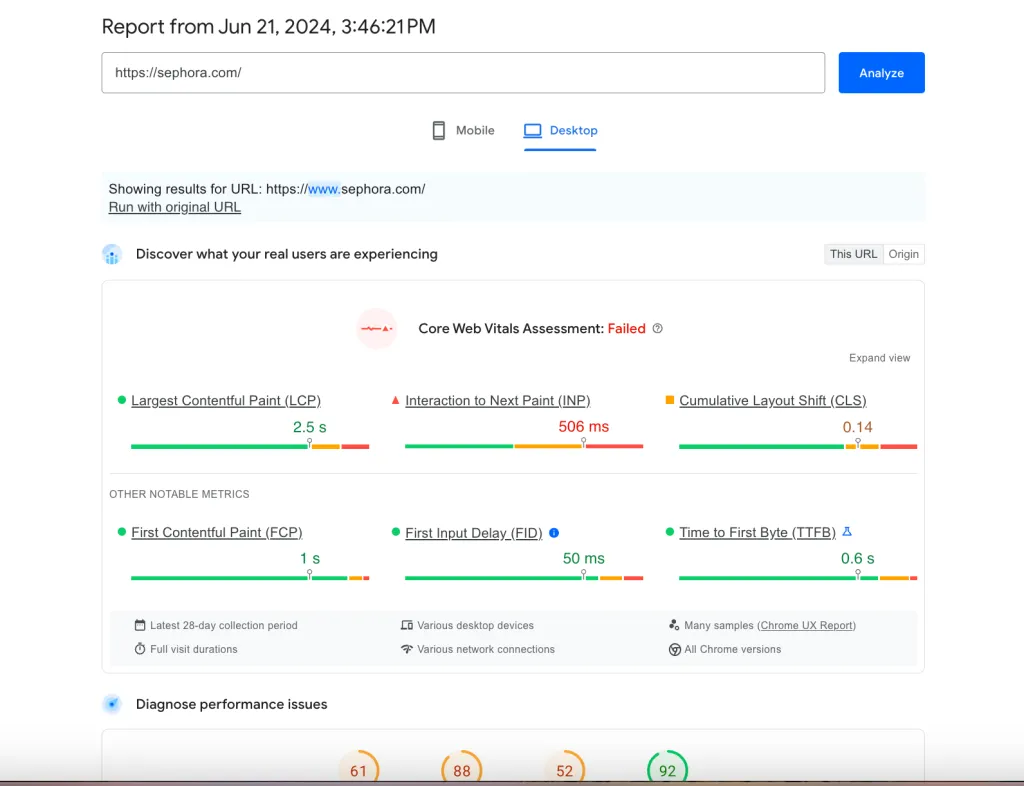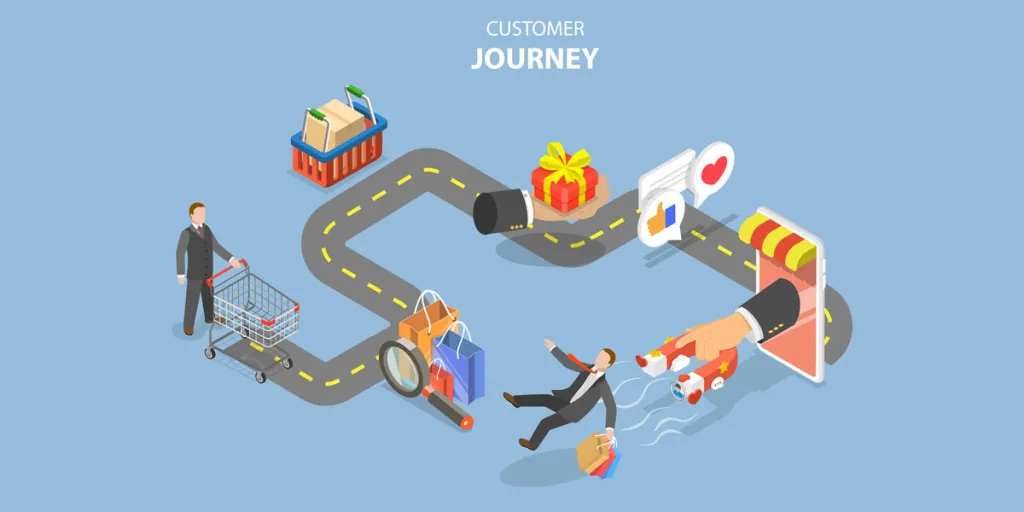Want to know the secret to transforming your online store into an irresistible destination for your customers? It’s ecommerce optimization.
By implementing the latest strategies, you’ll turn your online store into a place customers can’t resist. This guide will help you make changes to achieve your goals this year.
Learn how to speed up your website performance, give shoppers an experience they’ll love, make each visit memorable, and produce ads that hit the target every time.
What is ecommerce optimization?
Ecommerce optimization is the action of improving your website for optimal performance. This is not a single activity but a group that will enhance the user experience, improve website performance, and boost revenue. You can improve every aspect of your online store, from your product pages to the checkout process.
15 ecommerce optimization tips
Here are 15 actionable tips for ecommerce conversion optimization, focusing on strategies like streamlining the checkout process, adding trust signals, and improving product pages to boost sales and profits.
1. Email marketing
Email marketing is still one of the most effective ecommerce revenue drivers. It’s transformative. Grow an email list using exciting signup boxes and offering rewards that consumers can’t refuse.
- Group subscribers based on what they do, what they buy, and what they like, so you can send special messages just for them
- Write emails that grab attention with subject lines that entice your readers and hooks that grab them from the first sentence
- Use personalization for product recommendations and deals to increase readers’ likelihood of seeing the products they are most likely to buy
- Automated emails are a great strategy for greeting new customers, recovering sales from forgotten carts, and keeping buyers happy after they purchase
- Monitor your campaigns, tracking key metrics like open rates, click-through rates, and conversion rates, and optimize for success

2. Optimize product listings
Grab your website visitors’ attention with engaging product descriptions focused on the benefit to the end user. Talk about the most important things that make your products unique. Use words in a fun and interesting way and include keywords they search for the most so your listings appear first.
Also include high-quality, detailed product images. Consumers should feel like they can almost touch the items. Take photos from all sides. Show what makes each product special and better than others. Make your stuff look different from everyone else’s.
3. Optimize checkout page
Optimize the checkout experience to boost conversions. This process should be as clear and streamlined as possible, to increase the likelihood of visitors completing their purchase. Look for ways to reduce the number of steps for checkout and give people the option to check out as guests if they don’t want an account.
Another ecommerce website optimization strategy is to give shoppers choices. Credit cards, PayPal, Apple Pay — the more ways to pay, the better. Instill confidence in buyers by displaying trust badges from reputable security companies and incorporating progress bars that indicate how close they are to completing their purchase.
4. Run A/B tests
A/B testing, which involves comparing different elements on a page to determine user preferences, can have a big impact on a website’s performance and, ultimately, sales.
For example, you might want to know if a catchy title or an appealing picture will make visitors want to stay on your page longer. Test it out.
5. Consider upselling and cross-selling
Upselling and cross-selling are powerful strategies that substantially increase the amount people can spend while still satisfying your shoppers.
When a shopper likes a product, use that chance to show them a better version (upsell) or additional related products that they may want to add on (cross-sell). Put together packages or bundles that people can’t say no to.
6. Create a personalized user experience
Improve your customers’ shopping experience by creating a personalized, engaging journey tailored to their unique preferences. Retailers can leverage customer data to provide personalized product recommendations based on individual preferences.
Customers will be happy to get emails from the store with product ideas and special offers that match what they like. By segmenting customers into groups based on age, interests, and purchase history, businesses can send targeted emails containing personalized product recommendations and special offers that align with individual preferences, increasing customer satisfaction.
To create a captivating and memorable shopping experience, stores should ensure that every aspect of the customer’s journey, from their initial visit to the company’s website until their purchase, feels customized and tailored to their unique preferences.
7. Search Engine Optimization (SEO)
SEO is the practice of enhancing a website to improve its visibility and ranking on search engine results pages, driving more free traffic to the site. Use keyword research tools to look for words that are valuable but not too difficult to rank for.
Put the terms you want to rank for in titles, descriptions, and tags on product and category pages, as a structured website helps search engines navigate it. Make a sitemap so they know where to go.
Write blog posts that teach readers things, create detailed guides, and produce engaging videos. Establish your brand as an expert in your field to attract visitors. Finally, work with trusted websites to get links to your site and increase its perceived importance.
Optimizing for search engines requires dedication. But if you do the right things and consistently create useful content, you will get a steady stream of traffic to your online store.
8. User Experience (UX) enhancements
A seamless buying journey is crucial to ecommerce success. Help customers find what they want to buy with a prominent search box and easy-to-see menus. Look at how popular retailers like Sephora make it straightforward for people to discover merchandise.

Displaying curated items to shoppers captures their interest and encourages them to explore more offerings. Additionally, suggesting related products and add-ons can increase sales and enhance customer satisfaction. Easy-to-see buttons should make it easy for customers to check out and pay, and features like image descriptions and keyboard accessibility ensure everyone, regardless of ability, can shop with ease.
By crafting your online store into a delightful experience, you’ll boost revenue and cultivate devoted shoppers who love buying from you.
9. Mobile optimization
To thrive in our mobile-first era, retailers must prioritize smartphone-friendly sites. Your site must first look visually appealing and be effortless to read on screens of all sizes. Make the text and buttons large so they’re easy to see and press.
Your site also needs to be easy to navigate from a mobile device — check all buttons work properly and each page loads correctly. Make mobile checkout expedient by accepting Apple Pay or Google Wallet. These allow buyers to complete their purchases easily. Guarantee your website responds swiftly as well. Slow loading times can make visitors abandon their carts and shop elsewhere.

10. Conversion Rate Optimization (CRO)
Conversion Rate Optimization (CRO) is the practice of increasing the percentage of users who convert on your site. You decide whether that conversion is making a purchase, signing up for your newsletter, filling out a form, or a combination of them.
A/B testing is very important for CRO success. It lets you try out different parts of a page to find the optimal mix that captures attention and gets people to buy. Testing and changing your site regularly will help you find the winning plan that increases your conversion rates.
Showing trust signals like customer reviews, testimonials, and security badges can help potential buyers feel more confident about purchasing from you for the first time. You can also create a sense of urgency and scarcity with limited-time offers and low-stock alerts that make shoppers want to act immediately.
Implementing these strategies for ecommerce conversion rate optimization will transform your store into a sales-generating machine.
11. Content and media
Product videos are essential for showcasing your offerings and educating potential buyers, so create videos focusing on different stages of the customer journey, including product demonstrations, unboxing experiences, and customer success stories. Put them with high-quality, attention-grabbing pictures that show the features and benefits of what you sell.
12. Customer reviews and social proof
Customer reviews are the heart of your online store. They act as strong social proof, influencing buying choices and creating confidence with possible buyers. You should actively look for great reviews from happy shoppers, giving rewards like special discounts or loyalty points to encourage them to share their stories.
These priceless testimonials will impact important decision-making moments for other customers. Nothing provides confidence for consumers like feedback from people who have already made the buying journey before them.
13. Site speed and performance
Site speed is essential. Too slow, and people will click away and visit a competitor store instead.
To make pages load faster, reduce image size, get rid of plugins you don’t need, use a web host you can count on, and keep pages simple.
Caching in the browser is beneficial because it saves elements on a user’s computer, eliminating the need to reload everything upon their return. You can also make your CSS, JavaScript, and HTML files smaller to help it perform better. PageSpeed Insights can show you where the website is slow, so you can make it faster.
When you make speed and performance a focus, you create an experience that pulls customers in. Visitors engage more. They buy more. And they return more.

14. Reducing cart abandonment
Cart abandonment is inevitable for ecommerce stores. To reduce it, ecommerce websites need to be clear and inform customers through every part of their shopping journey. They should show shipping prices, how long it will take to get the products, and what shipping is available. Transparency builds trust.
Popups that appear when someone is about to leave their cart can be genuinely helpful. They remind the website visitor about the items they left behind and cause them to reconsider buying. Sending abandoned cart emails is also highly effective. These messages can show the exact products the person almost bought and might even have a special deal to get them to come back.
Ad teams can incorporate cart abandonment in their ad-buying strategy as well. These ads will show the items the person didn’t buy on other websites they go to. It’s a powerful method to keep those products in front of your potential customers.
15. Social media integration
Harnessing the immense power of social media can catapult your online store to new heights. It can make your brand seem real and help you sell more products. Imagine happy buyers posting pics of what they just got from you on Facebook and Instagram. Now envision the impact that could have on your website. Highlight user-generated content to build social proof and credibility.
You can also run targeted social media ads, putting your products directly in front of people who are likely to enjoy them. And don’t overlook the potential of influencer marketing — by partnering with a popular account whose audience interests overlap with your own, you can create very effective campaigns that generate new customers.
Summary
Ecommerce optimization is crucial for transforming your online store into a top destination for customers and achieving your goals in 2024.
By implementing the strategies outlined in this guide, you can enhance every aspect of your store, from product listings and checkout processes to mobile optimization and personalized user experiences. These actionable tips will help you boost your website’s performance, provide a memorable shopping experience, and drive higher conversion rates.
Stay ahead of the competition and create an online store that not only attracts but also retains loyal customers, ensuring long-term success in the dynamic ecommerce landscape.
Source from Omnisend
Disclaimer: The information set forth above is provided by omnisend.com independently of Alibaba.com. Alibaba.com makes no representation and warranties as to the quality and reliability of the seller and products.








